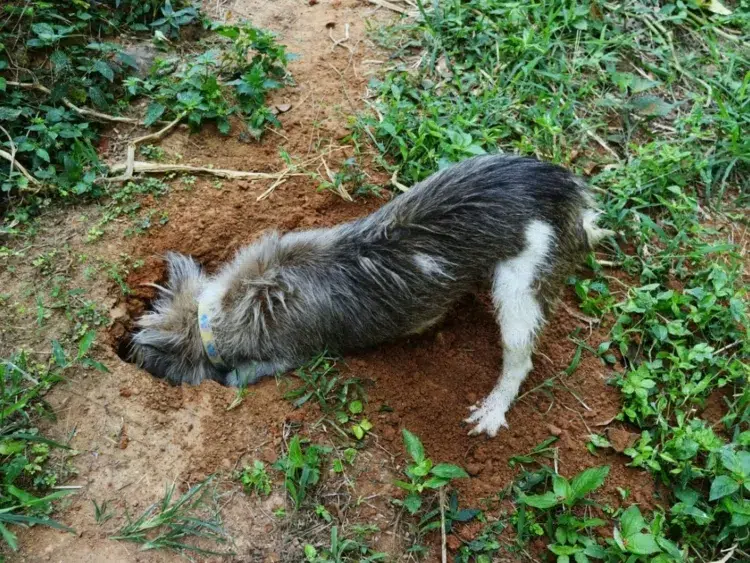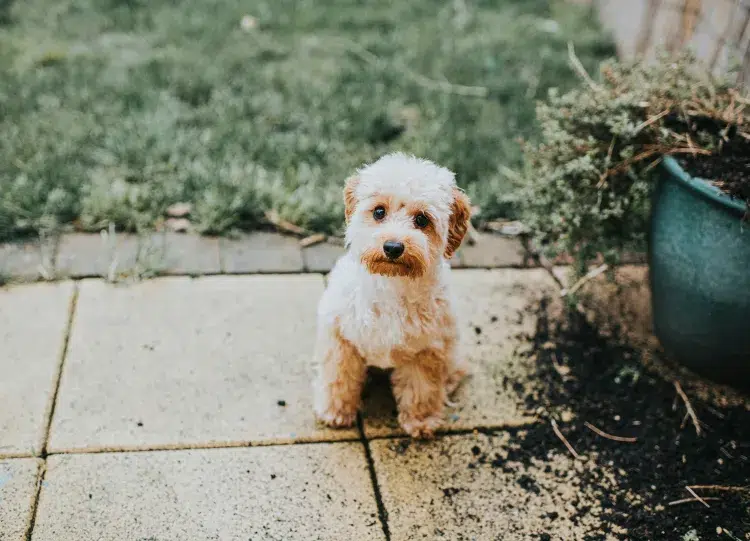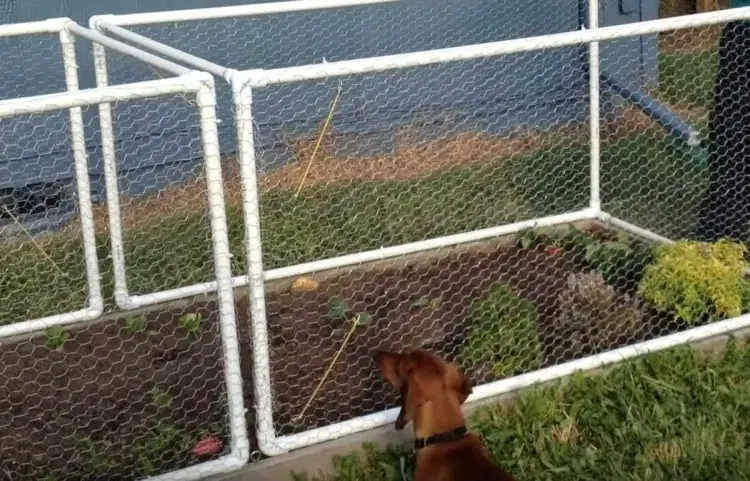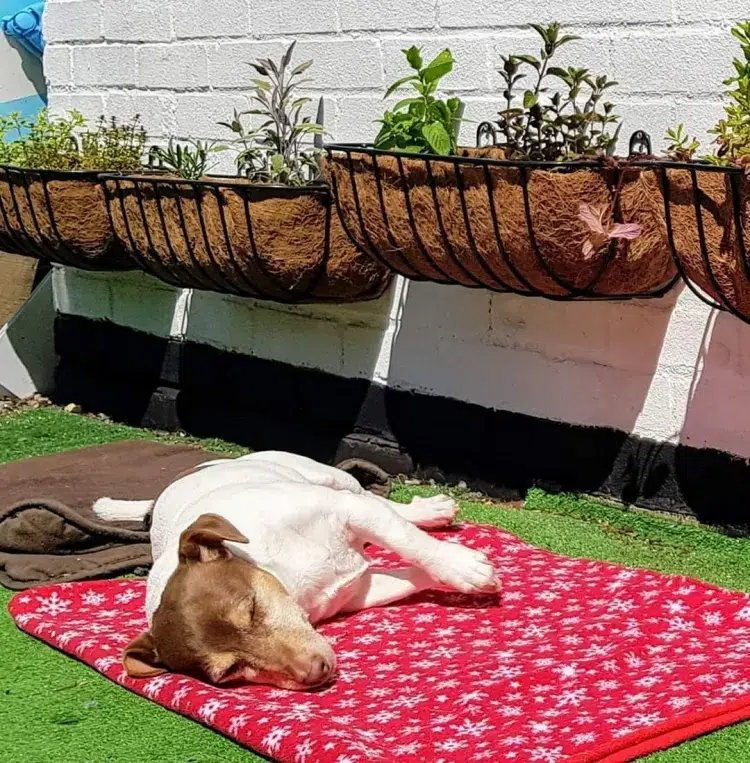Understanding the reasons behind your dog’s destructive behavior is crucial for effective prevention and training. By addressing the root causes, such as separation anxiety or lack of physical activity, you can help your pet develop positive habits and maintain a harmonious relationship with your garden. Implementing proactive strategies, like creating designated digging areas and using pet-friendly deterrents, can protect your outdoor space while ensuring your dog’s well-being.
Who is responsible for the holes and torn grass in your garden? How can you prevent your dog from destroying your outdoor space? Should you discipline a dog exhibiting destructive behavior?
As you observe your dog roaming in the garden, the aftermath can be unpredictable. It’s a scene of devastation – holes scattered around, flower beds in ruins, grass torn apart. The question arises: who is causing all this chaos? The unexpected answer lies in your pet’s peculiar actions. Despite appearing calm, is he actually a destructive dog? What steps should you take? Is discipline necessary? Is this behavior intentional or accidental? To gain a deeper understanding of your pet’s nature, delve into the insights shared below!
Preventing Garden Destruction by Your Dog and Understanding Destructive Behavior

Your family’s latest addition, a lively and adorable Jack Russell, has brought joy. However, dealing with urine stains on furniture can be a challenging reality check. But fret not! Stay composed and focus on teaching him proper behavior.
Imagine returning home to a ransacked interior – a sight of utter chaos! Taking him outside as a form of punishment only leads to further dismay. Discovering the garden destroyed later exacerbates the situation. You’re not alone in this struggle. How can you prevent your dog from wreaking havoc in the garden? This is a common dilemma faced by numerous pet owners.
What triggers this behavior and how can it be rectified? Let’s explore the concept of a “destructive dog.”
Understanding the Causes of Destructive Dog Behavior

Primarily, a small dog separated from its mother forms a strong attachment to its owner, leading to dependency. Consequently, when left alone, feelings of loneliness, betrayal, and anxiety may arise.
Moreover, insufficient physical activity can escalate into destructive hyperactivity. Engage your pet in walks and interactive indoor games to channel his energy positively. By redirecting his focus, you can express affection and provide mental stimulation simultaneously.
Additionally, life changes such as loss or relocation can trigger feelings of isolation and neglect in dogs. Disruption to their familiar environment can result in frustration and destructive tendencies.
If you notice your dog consuming grass, it could indicate an underlying digestive issue. Professional intervention may be necessary to address this concern effectively.
Understanding these underlying factors enables you to respond appropriately to your pet’s behavior.
Effective Strategies to Curb Destructive Behavior and Protect Your Garden

Your furry companion may view gardening activities as an opportunity to mimic your actions, leading to unintended destruction. While scolding him seems like a quick fix, it may exacerbate the situation by causing stress.
As a proactive measure, restrict his access to vulnerable areas at the first sign of misbehavior. Erecting a waist-high fence around delicate zones, particularly flower beds, can serve as a temporary deterrent while instilling positive habits. For a lasting solution, consider incorporating inaccessible shrubs like boxwood to create a natural barrier.
To safeguard your vegetable patch, raised beds offer protection against curious paws. Encourage digging in a designated area filled with sand and buried treats to redirect his energy positively. By fostering these habits, you can enjoy a harmonious garden environment.
Maintaining a Pristine Garden in Harmony with Your Dog

Seek advice from cat owners on safeguarding your garden from pets. Planting thorny shrubs and aromatic flowers can deter dogs effectively, avoiding toxic varieties like aloe vera. Opt for pet-friendly options such as perennial creeping thyme, camellias, and African daisies to enhance your garden’s appeal.
Consistent training using commands like “leave” and “no” can curb destructive tendencies in dogs. Maintain a firm yet composed demeanor to communicate expectations clearly. With patience and consistency, your dog can learn to exhibit desirable behavior.
In conclusion, fostering a garden-friendly environment for your dog requires a combination of understanding, patience, and proactive measures. By identifying the triggers of destructive behavior and implementing effective strategies, you can enjoy a beautiful garden without compromising on your pet’s happiness. Remember, a well-maintained garden and a well-behaved dog go hand in hand, creating a peaceful coexistence between nature and your furry companion.
Frequently Asked Questions
1. Why is my dog destroying my garden?
Dogs may destroy gardens due to reasons like separation anxiety, lack of physical activity, or boredom. Understanding the root cause can help in implementing effective preventive measures.
2. Should I discipline my dog for destructive behavior in the garden?
Disciplining a dog for destructive behavior in the garden may not be effective. It’s essential to focus on positive reinforcement, redirection, and creating a dog-friendly environment to prevent such actions.
3. How can I prevent my dog from destroying specific areas in the garden?
Prevent destructive behavior by creating designated digging areas, using pet-friendly deterrents, erecting fences, and providing mental stimulation through interactive games and walks.
4. What are the common triggers for destructive behavior in dogs?
Triggers for destructive behavior in dogs include separation anxiety, insufficient physical activity, life changes like relocation, and underlying health issues. Identifying these triggers is crucial for addressing the behavior.
5. Can certain plants or landscaping techniques help deter dogs from damaging the garden?
Planting thorny shrubs, aromatic flowers, and using raised beds can deter dogs from damaging the garden. Additionally, training commands like “leave” and “no” can help curb destructive tendencies.
6. Should I seek professional help if my dog shows signs of eating grass in the garden?
If your dog shows signs of eating grass in the garden, it could indicate an underlying digestive issue. Consulting a veterinarian for proper diagnosis and treatment is recommended to address this behavior.
7. How can I create a harmonious garden environment while ensuring my dog’s well-being?
To maintain a harmonious garden environment, focus on understanding your dog’s needs, implementing positive training techniques, and creating a dog-friendly space with designated areas for digging and play. Consistency, patience, and a balanced approach are key to nurturing a peaceful coexistence between your garden and your furry companion.
